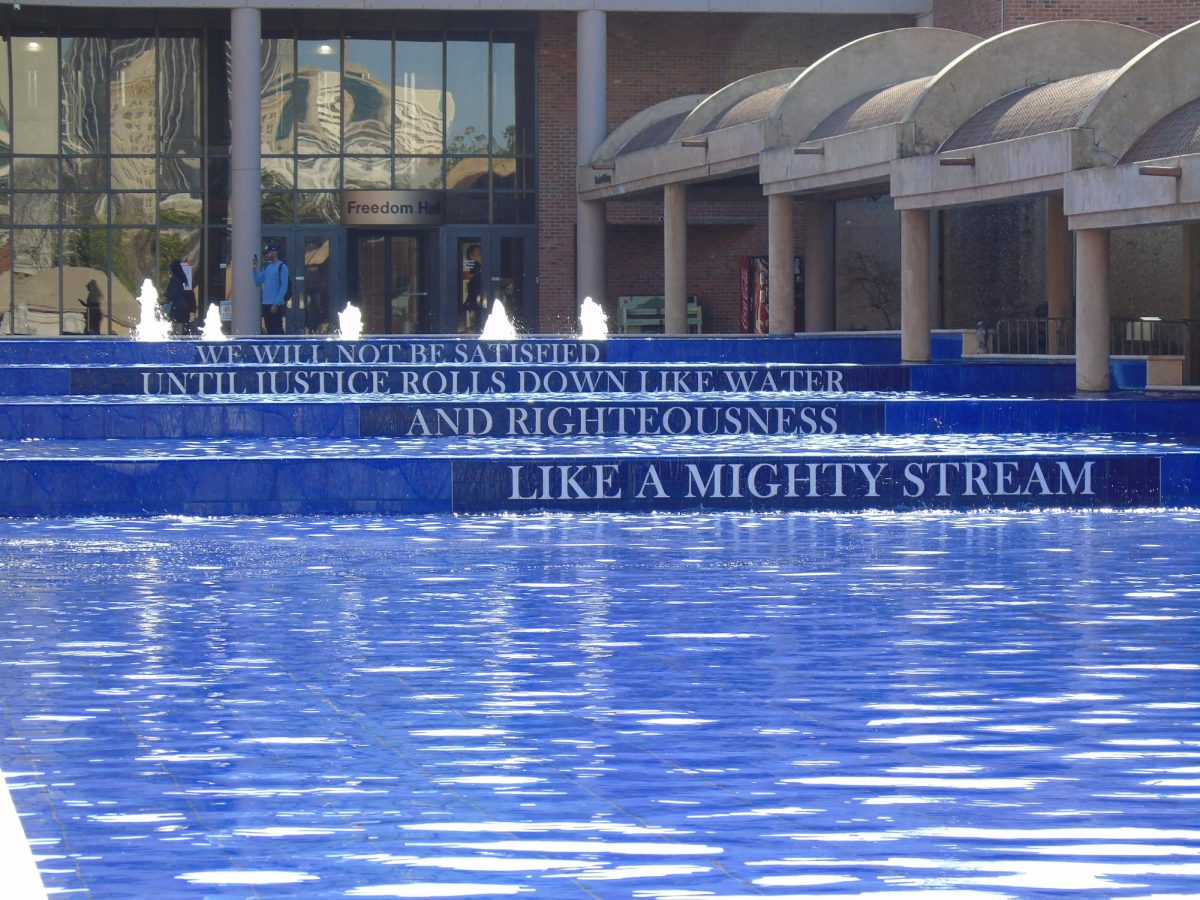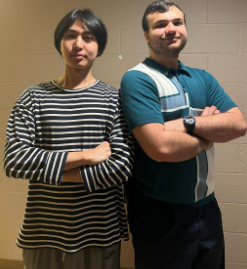Like most PC students, I typically spend my spring break relaxing, spending time with family, and working ahead on assignments.
But this spring break, I attended the Civil Rights Spring Break trip from March 8-12 led by Dr. Erin McAdams and Dr. William Harris.
We left PC Friday, March 8, for Birmingham, Alabama, where we visited the 16th Street Baptist Church. Most have heard about how this church was bombed in 1963, resulting in the deaths of four young girls. A marker commemorating where the bomb was stands outside the church. I didn’t know, though, that the last man who was a part of planting the bomb was not convicted until 2002. I was looking forward to seeing this church in person, and it was one of my favorite places we visited.
Across the street from the church is the Birmingham Civil Rights Institute, a museum that contains additional artifacts from and about the 16th Street Baptist Church bombing as well as the Birmingham campaign of the Civil Rights movement in general. The exhibit showing Eugene “Bull” Connor’s tank was one of our favorites of the trip (see a picture in the gallery above!).
We spent the next two days of the trip in Montgomery, Alabama. On Saturday morning, we toured the Dexter Avenue Baptist Church parsonage museum, where Martin Luther King, Jr. lived with his family. The parsonage was bombed during the Civil Rights movement, and the front porch has a marker where the bomb landed. Some of the furniture is original. Next, we visited the Rosa Parks Museum and the Freedom Rides Museum.
Prior to this course, I had never heard of the Freedom Rides. The Freedom Rides occurred in the 1960s to test racial discrimination in interstate travel terminals. The Supreme Court had declared segregation in terminals to be illegal. A similar ride called the Journey of Reconciliation was conducted in 1947 to see if the federal government would enforce the Supreme Court ruling that segregated interstate travel was illegal. The freedom riders knew they would be arrested and hoped that their arrests would prompt the Justice Department to enforce the ruling. However, they were not only arrested but also attacked by mobs and severely injured.
Finally, Mr. Kenneth Mullinax took us on a tour of several civil rights sites. We visited Alabama State University and took pictures outside Dexter Avenue Baptist Church. We saw a statue of Rosa Parks and a statue of Jefferson Davis at the state capitol building.
On Sunday, we spent the day at the Equal Justice Initiative (EJI) Legacy Museum and the National Memorial for Peace and Justice. The museum traces the history of African American enslavement through the Middle Passage, the Civil War, segregation, the Civil Rights movement, and contemporary issues. I do not know how to describe this unique museum and unfortunately was not allowed to take pictures there, but you can get a taste of it in this video.
On Monday, we visited Selma, Alabama, where we walked across the Edmund Pettus Bridge, the site of the Bloody Sunday massacre in 1965. On this day, a group of marchers planned to walk from Selma to the capitol in Montgomery but were attacked on the bridge and forced back. We also visited the National Voting Rights Museum and Institute and the Ancient Africa, Enslavement, and Civil War Museum.
We spent our last day, Tuesday, in Atlanta, where we visited the Martin Luther King, Jr. National Historical Park and the National Center for Civil and Human Rights. The highlight of the National Center for Civil and Human Rights is a simulator that replicates the experience of the students that participated in the Greensboro lunch counter sit-ins.
Overall, the trip was incredible and educational, and I’m so glad I got to take part in this experience during my last semester at PC. Check out some of my pictures from the trip in the gallery above! And watch for the next Civil Rights Spring Break trip coming up in a few years.


